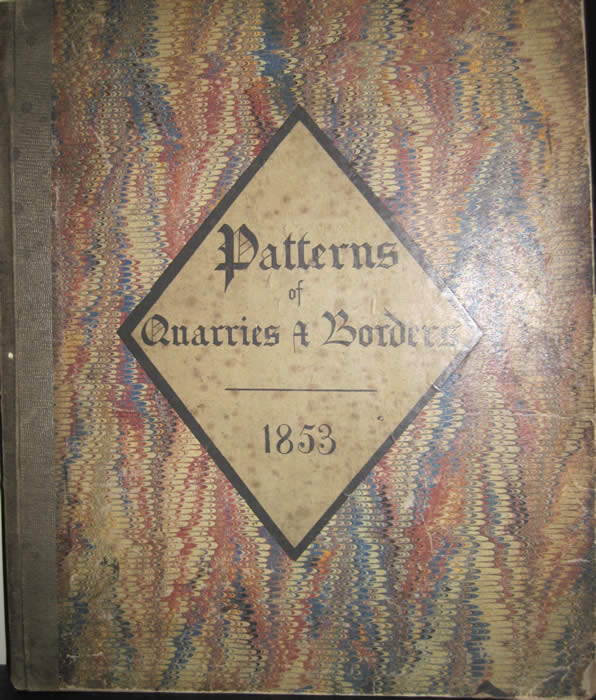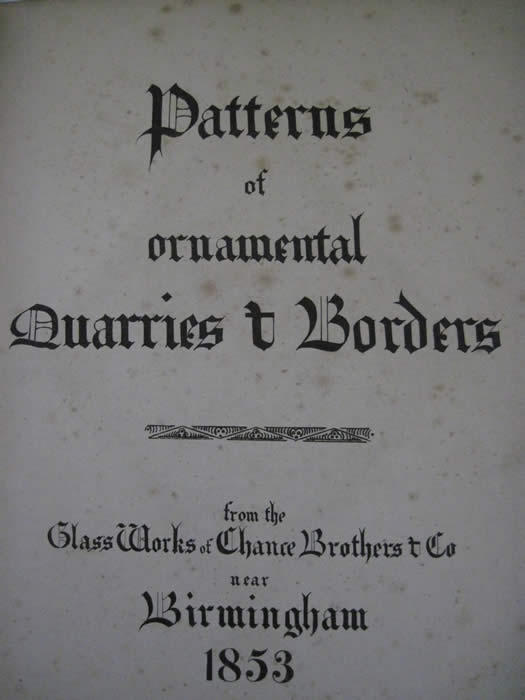
| PATTERNS OF ORNAMENTAL QUARRIES & BORDERS FROM THE GLASS WORKS OF CHANCE BROTHERS & CO. | |
|---|---|
 |
 |
 |
|
(TRADE CATALOGUE) CHANCE BROTHERS & CO. PATTERNS OF ORNAMENTAL QUARRIES & BORDERS FROM THE GLASS WORKS OF CHANCE BROTHERS & CO.
Birmingham: 1853. 4to. Publishers cloth spine, marbled limp boards. Lithograph title leaf, 27 plates, including 21 tinted lithograph plates and 6 chromolithograph plates.
Rare catalogue with no copy of this edition recorded on OCLC and only one copy of the 1863 edition listed in Australia. This rare catalogue illustrated the decorative work that Chance Brothers were producing in the 1850s. Clearly some of the designs are those described in the Great Exhibition of 1851 - "Chance Brothers & Co., Glass Works, near Birmingham - Manufacturers. Painted windows-Leaded work, with medallions and ornamental work of the early Gothic style; and in the style of the fourteenth century,..."
The first part of the work illustrates "Quarries" small panes of glass, usually lozenge-shaped and the second part of colored plates giving border designs. Pugin and the Gothic Revival is clearly detectable in the illustrations, this together with the fairly close proximity of the two firms of Hardmans and Chance would imply some cross influence.
Robert Lucas Chance, always known as "Lucas", bought the glassworks of the British Crown Glass Company in Spon Lane in 1824, which specialized in making blown window glass. The company soon ran into difficulty and its survival was guaranteed in 1832 by investment from his brother William Chance who owned a successful iron merchants in Great Charles Street, Birmingham. Lucas and William became partners in the business, which was then renamed Chance Brothers & Company.
Chance Brothers were amongst the earliest glass works to carry out the cylinder process in Europe. In 1837, the company made the first British cylinder blown sheet glass and in short order became the largest British manufacturer of window and plate glass, and optical glasses.
Other Chance Brothers projects included the glazing of the original Crystal Palace to house the Great Exhibition of 1851, and the Houses of Parliament. At this time they were the only firm that was able to make the opal glass for the four faces of the Westminster Clock Tower which house the famous bell, Big Ben. The ornamental windows for the White House in Washington, DC were also made by them.
sold